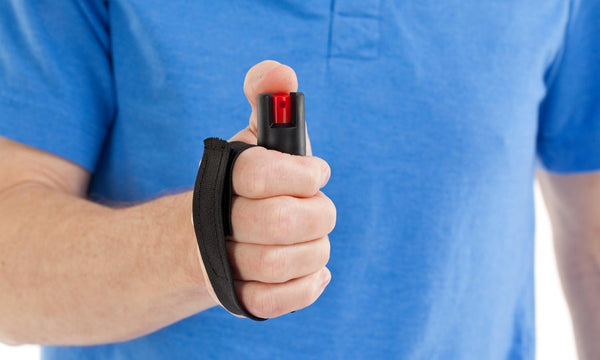
The United States was the first country to offer self-defense training for women. This was after suffragettes started to be subjected to brutal police force and physical assaults. While some suffragettes cared only about their physical safety, others embraced the political implications that self-defense training could have on their physical empowerment. This is evident in cartoons that reveal the anxieties of suffragette about the possibility militant suffrage.
Lessons from the fight to get the right vote
The fight for women’s self-defense dispelled patriarchal myths regarding the feminine body in the early twentieth century and gave rise to a new image, one of strong, independent women. This movement was an example of feminist politics that was repeated throughout the 20th century. How did women get the right to defend their rights? The author offers several lessons learned from the fight. Wendy L. Rouse, a woman who is a self-defense advocate for women, describes in this book the history of the movement.
The struggle for women's suffrage paralleled the fight for self-defense. In England, women suffragists faced public backlash and police violence. To protect themselves, they turned to martial arts. American women were still pursuing their college degrees, so they didn't hesitate to display their physical prowess.

The movement's origins
The history of women's self-defense dates back to the turn of the twentieth century, when early feminists gathered to demand better rights for women. They demanded the right for women to vote, to own property and to be educated about issues that affect them. Although many women now know about these movements, few realize that they began during a progressive period. These efforts are what led to women's self-defense training.
The majority of feminists in the self-defense movement were white women. These women were encouraged and supported to learn self-defense in order to improve their social standing and support their careers. These classes doubled as consciousness-raising sessions. By learning self-defense strategies, white women were able dispel any preconceptions they had about the female body's fragility. These women then taught these strategies to working-class ladies.
Learn self-defense skills and reap the benefits
One of the most important benefits of learning women's self-defense skills is the increased confidence it brings. Women can learn self-defense skills to help them in all kinds of situations. Women who can defend themselves in a variety of situations will feel more confident and more able face unwelcome attention. They will also feel better about their overall personalities. In addition, learning these techniques can help women stay safer while out and about. Women's self defense is essential for their safety.
Although self-defense training is not something many women want to invest in, there are many benefits. Self-defense can help women avoid dangerous situations and can teach young women and girls how to defend themselves. Self-defense training for women could make a big difference in the lives, if not only can it change the lives of many people, but also empower young girls. Ultimately, learning women's self-defense skills can help break the cycle of violence and abuse within the family, neighborhood, and community.

There are many misconceptions about women's self defence
Women's self-defense is often misunderstood due to the way they defend themselves. Although women are not natural fighters, they can throw a mean punch with proper training. Women shouldn't bounce around like boxers. They have to shift their weight to land the punches. Many women taking self-defense classes are trained in kickboxing, or other sports methods.
Inadequate awareness of the importance of empowerment-based women’s self-defense training is a sign of weakness. It has been linked to significant reductions in victimization rates. According to Holly Maguigan, the research shows that empowerment-based self-defense training is effective in reducing violence against women. Effective tactics are also useful for protecting women from attackers, even if they are more aggressive or more dangerous than usual.
FAQ
What is the best weapon to carry for self-defense?
A knife is the best tool for self defense. You may not think you need a knife for self-defense, but if someone tries to attack you, then you'll find yourself wishing you had one.
A $100 folding knife is not necessary to be protected. Simple pocketknives will suffice. And you can always add a few extra tools to ensure you're prepared for any situation.
Are there legal requirements to own a stungun?
You may need to show proof that you have been trained before you can purchase a stungun in some states.
Some states require stun guns to be registered with the police.
Other states require you to notify law enforcement whenever you move.
Can I be charged with using my stungun?
No. Stun guns are considered "less lethal" weapons. They cannot inflict serious injury and are therefore considered less deadly.
You could be charged even if your stun gun accidentally hits someone.
What does an attacker do with a stun gun?
A stun gun uses electricity for incapacitating someone. It causes muscle contractions and stops them from moving. They become unable or unwilling to fight back.
Stun guns work best when applied to the neck or head.
The best way to use a stungun is to hit the victim's body until they become unconscious.
Some stun guns also emit high-pitched sounds to scare attackers. These types of stun guns are called TASERs.
Statistics
- Verbal harassment was the most common form, but 51 percent of women said they were touched or groped in an unwelcome way, while 27 percent of women survived sexual assault. (healthline.com)
- Some people walk into a gym thinking they are going to become the best by training whenever they like and not putting 100% effort in. (budodragon.com)
- Most likely, you'll get tapped out by 90% of the people in your first 3-5 months. (mmaclan.com)
- In a January 2018 survey of 1,000 women nationwide, 81 percent reported experiencing some form of sexual harassment, assault, or both in their lifetime. (healthline.com)
External Links
How To
How to Survive An Invasion At Your Home
Home invasion can be a frightening thought, especially if there are children involved. We didn't know what it would feel like to be in the midst of home invasions when we began our home security installation journey. Here's what we've discovered so far.
-
You must not allow your kids to see the attackers. Our children were upstairs sleeping when two men entered our house. We took them downstairs until they arrived at the police station. Our children were not hurt but the experience was enough for them to be traumatized.
-
Lock Up All Valuables. The safe is located in our bedroom. We keep all valuables locked up. Even if someone breaks into the house, they won't be able to access it.
-
Keep an eye on Burglars. Our neighborhood has many burglaries. We keep a look out for suspicious people and cars.
-
Make sure you have a backup plan. Our family will be financially protected in case anything happens. We also have a plan in place to leave the country if necessary.
-
Prepare. Be prepared in case you are ever forced to defend your own life. Make sure you have food, water, and other supplies ready.
-
Call 911 first. Call 911 immediately if you suspect that someone has broken into the house. It's better to call the authorities than to wait for them to break down your door.
-
Use common sense. Do not let anyone enter your home if you don't feel at home. You should not invite strangers to your home.
-
Get Help From Neighbors Or Other People In The Area. If you feel unsafe, call your neighbors or friends. You can have them watch your back while calling the police.
-
Stay Calm And Do As Instructed By Police Officers. Stay calm and do exactly as instructed by officers. Do not flee or resist arrest
-
Photograph All Evidence. Take pictures of any evidence found during the investigation. This includes fingerprints, blood samples and other items.
-
Local Law Enforcement can be contacted to file a report. You can file a police report even if nobody was hurt. This could help prevent you from being convicted of future crimes.
-
Contact your Insurance Company immediately. Contact your insurance company right away. Let them know everything and then ask for an adjuster.
-
Retire Personal Belongings. Before you leave the scene, remove personal belongings. If you're wearing expensive jewelry, take it off and put it somewhere safe.
-
You must take good care of yourself. Make sure to clean up after your self. Throw away the trash, sweep up broken glass, and make sure all doors and windows are locked.
-
Do not talk about what happened. Talk about what happened. You never know who might try to use this information against you later on.